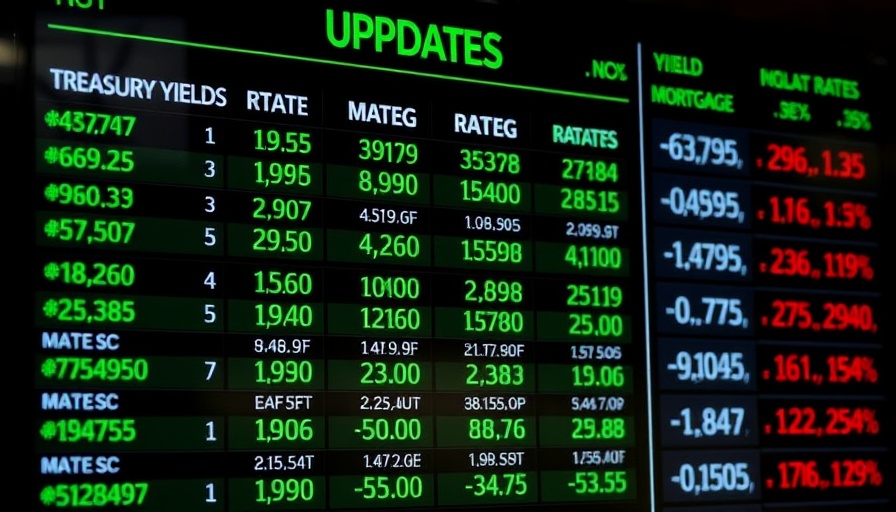
Understanding the Recent Market Dynamics
In today's ever-shifting economic landscape, key events can create ripples throughout the financial markets. Recently, two pivotal occurrences made headlines: the Treasury auction and the release of the Fed minutes. While there were no significant economic reports to shift market sentiment, these events captivated investors' and analysts' attention. The Treasury auction was slightly weaker than anticipated, leading to upward pressure on yields and a reaction across different market sectors, particularly mortgage-backed securities (MBS).
The Auction's Impact: Analyzing Treasury Trends
Treasury auctions, which are a routine part of government financing, have been under increased scrutiny recently. Investors typically regard them as just another part of the background, but the current market conditions have changed this perception. The Federal government sells T-bills and notes through regular auctions, equating to borrowing from investors. As more yields climb higher amid a backdrop of sluggish demand, this negative balance between demand and supply can push mortgage rates higher, spooling concerns for prospective home buyers.
What the Fed Minutes Reveal About Future Expectations
The minutes released from the Fed meeting provided further insights into interest rate expectations. Surprisingly, not all committee members agreed that a rate cut was necessary, which reflected a persistent worry about inflation. The market reacted tepidly to these insights — not improving nor significantly harming the situation. This showcases a critical moment for those monitoring financial indicators; reactions to Fed commentary can often foreshadow market movements.
Public Sentiment: Housing Demand in the Face of Rising Rates
The selling pressure in the MBS market amid rising yields exemplifies the tightrope many home buyers are walking today. With mortgage rates hovering around 6.36% for 30-year fixed rates, it becomes increasingly essential for prospective homebuyers to strategize effectively. As mortgage rates and Treasury yields entwine, potential buyers may need to be more proactive than ever. For those hoping to secure a mortgage, being well-informed about market trends might mean the difference between landing a favorable deal or facing higher costs.
Future Implications: Why Buyers Should Stay Informed
Looking ahead, there are valuable trends to watch. The connection between low Treasury auction demand and high mortgage rates is not to be underestimated. As borrowing costs rise, it may signal a tighter market for buyers, leading to a more competitive landscape. Historical trends indicate that when Treasury yields rise, mortgage rates typically follow suit. For everyday consumers, keeping a pulse on these trends can aid in navigating their mortgage options and making sound financial decisions.
Action Steps for Homebuyers: Navigating the Rush
In such an unpredictable economic environment, homebuyers should prioritize due diligence. Staying informed about changes in both Treasury yields and mortgage rates can help you make strategic choices. As the Federal Reserve continues to monitor inflation pressures, the decisions it makes will undoubtedly affect housing markets in profound ways. Engaging with your mortgage lender regularly and exploring different offers can yield better terms. Don’t hesitate to compare various lenders to secure the most favorable rate available.
 Add Row
Add Row  Add
Add 




Write A Comment